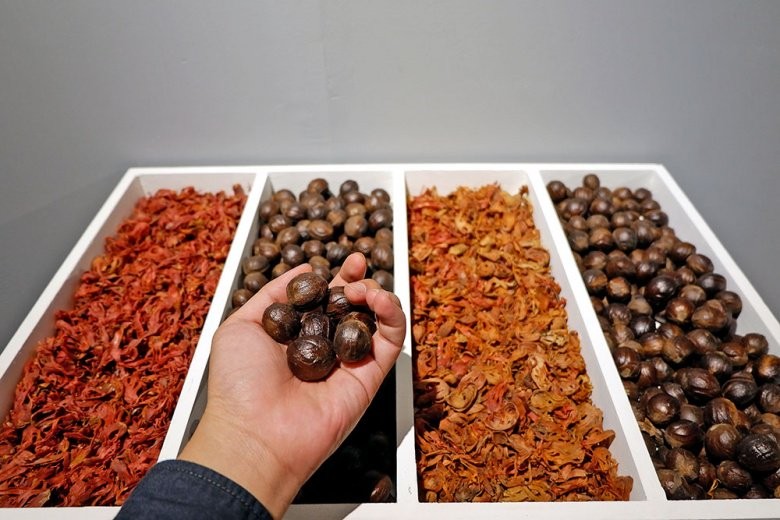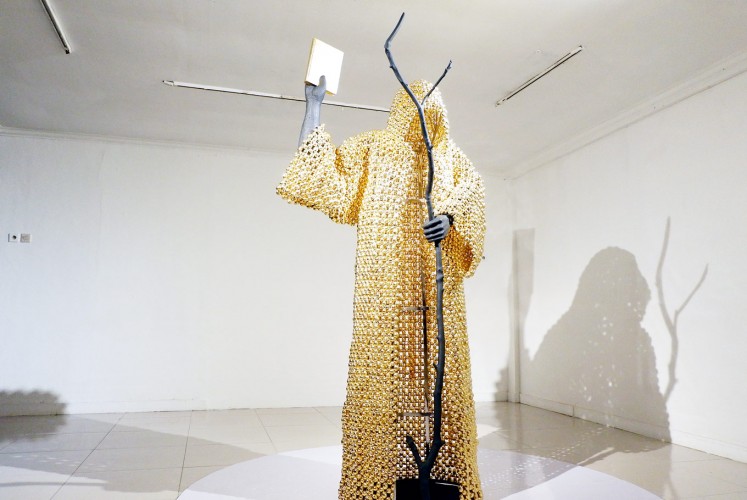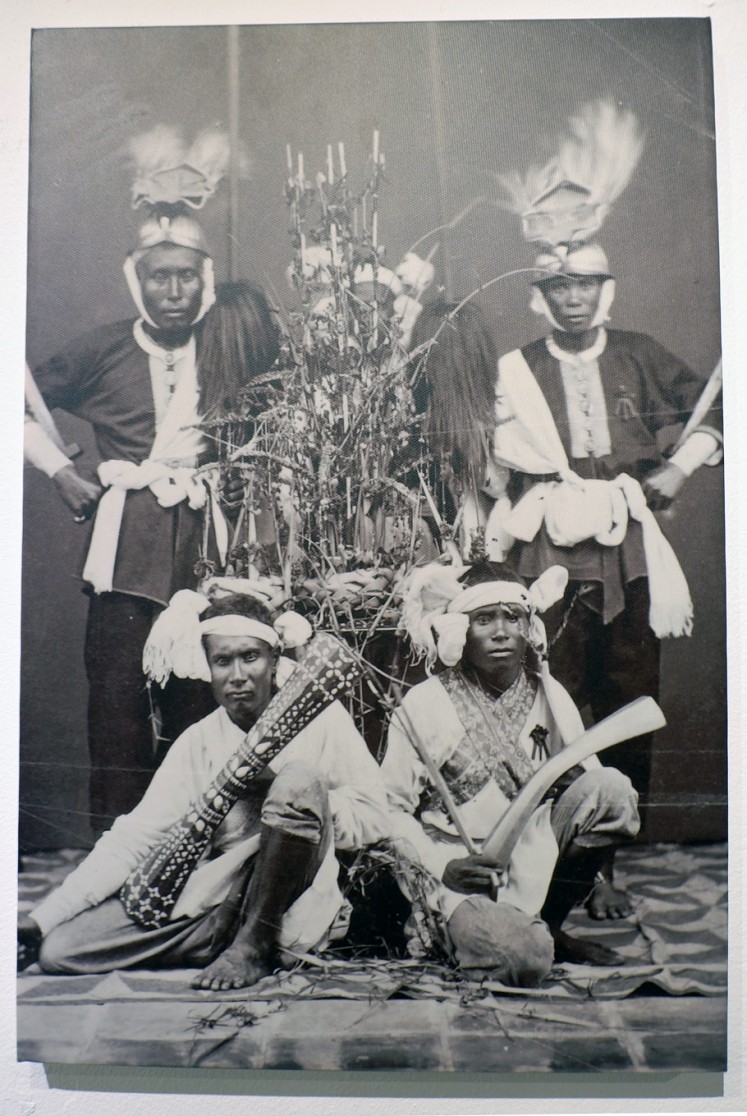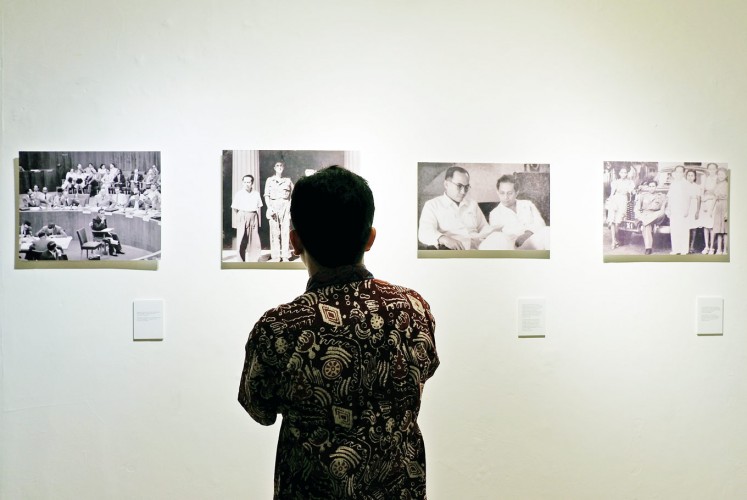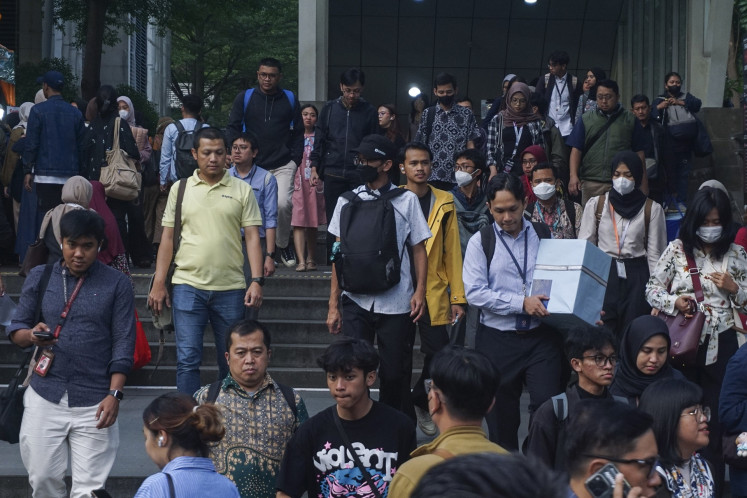Popular Reads
Top Results
Can't find what you're looking for?
View all search resultsPopular Reads
Top Results
Can't find what you're looking for?
View all search resultsBanda Islands a hidden treasure in Indonesia
An exhibition evoked the memory of the precious nutmeg, which gave the spice-laden Banda Islands in Maluku a major place in world history.
Change text size
Gift Premium Articles
to Anyone
B
andanese people living in the capital city flocked to the National Gallery of Indonesia in Central Jakarta on Wednesday evening for the opening of Banda, Warisan untuk Indonesia: Pala and Perjanjian Breda 1667-2017 (Banda, Heritage of Indonesia: Nutmeg and the Treaty of Breda 1667-2017), an exhibition that runs until Oct. 4.
Among them was Ramli Sondakh, 64. Bringing his nephew, he was excited to talk about the background story of a photograph showing Bandanese people from Maluku clad in the Cakalele war dance costume.
“They have five types of war dances. During the era of Dutch colonialization, they had no fear. But, they were afraid of only one thing: pig’s blood. If there was a pig present, they would run away,” he said, pointing to the black-and-white photograph.
The exhibition commemorates the 350th anniversary of the Treaty of Breda, signed on July 31, 1667, which ended the second Anglo Dutch war (1665-1667).
Opened by the Culture and Education Ministry’s director-general of culture, Hilmar Farid, the exhibition showcass at least 57 items, ranging from maps, photographs, books, paintings and installations.
“We want to look at the history of what happened 350 years ago to see into the future. In the past, people came to Banda due to the stories of nutmeg. The function of nutmeg has changed in world trade, but Banda still has extraordinary stories,” Hilmar said.
Hallucinogenic by Titarubi (JP/A. Kurniawan Ulung)Before the Treaty of Breda, the Dutch East Indies Company (VOC) and the British East India Company (EIC) competed to control nutmeg production in the Banda Islands, which consists of 11 islands, including the tiny islands Ai and Run.
The VOC, who entered the Banda Islands after the Dutch conquered Ambon in 1605, wanted a worldwide monopoly of nutmeg — which at the time was the world’s most valuable commodity after gold — by forcing the Bandanese people to sell the commodity to them exclusively.
However, they did not comply and continued to sell the commodity to the English, who had fortified trading posts on Ai and Run islands. For the Dutch, the English — who paid higher price for the nutmeg — were a threat to their monopoly. Their rivalry escalated, leading to the Amboyna Massacre, which was the killing of EIC workers in Ambon.
In 1621, Governor-General Jan Pieterszoon Coen sailed to Banda with 2,000 well-armed soldiers, killing thousands of people in the villages that resisted the VOC.
Almost 2,000 people from the Banda Islands were brought to Batavia, now Jakarta, as captives, but hundreds of them managed to escape later on. Only around 1,000 people (less than 6 percent of the initial population) remained on the islands.
The Treaty of Breda, ended the rivalry between the VOC and EIC. The English gave up their claims on Run and Suriname to the Dutch. In return, the English were given New Amsterdam, now New York, from the Dutch.
Pride: An old photo depicting Bandanese people wearing Cakalele war dance costumes. (JP/A. Kurniawan Ulung)Under Dutch rule, the Banda Islands were also used as a place of exile for leading Indonesian figures, ranging from Tjipto Mangoenkoesoemo, Iwa Koesoemasoemantri, Sutan Sjahrir and Mohammad Hatta, who later became the country’s first vice president.
In the exhibition, two letters written by Hatta in 1937 to ask for a number of books during his years in exile are on display.
There is a photograph of Sjahrir, who stood in front of his car with his wife, Poppy Sjahrir, and his adopted children from Banda in 1946 in Jakarta. This picture showed the deep relationship between him and the Bandanese people before and after he became vice president.
Other photographs showcase the raw beauty of the Banda Islands, including the photo series “I Love Banda” by Isabelle Boon from the Netherlands.
There is also a beautiful installation called Hallucinogenic, a look-alike statue dressed in a robe made of gold-plated nutmeg, with two hands that respectively hold a gold plated book and burnt wood.
Created by artist Titarubi, the installation is named Hallucinogenic because nutmeg can cause hallucinations. Other side effects include headaches, nausea, dry mouth and memory disturbance.
The nutmegs are covered with gold to underline the fact that in the 16thcentury, European colonizers traveled all the way to Banda to hunt for nutmegs that were like a golden treasure for them. Meanwhile, the gold plated book symbolizes the people’s knowledge about nutmeg that they thought was worth gold during the era of Christopher Colombus.
History revisited: A visitor enjoys photographs related to the history of the Banda Islands. (JP/A. Kurniawan Ulung)The burnt wood is a symbol of the pain of the Bandanese people, who were killed and enslaved by the Dutch. The large size of the shinning robe, which is larger than the size of the human body, symbolizes the arrogance of human beings over the knowledge they have.
Artist Made Wianta also delivers a similar message through his artwork called Treasure Islands, which comes in the form of orange and gold buffalo leather that is shaped to resemble the Banda Islands. Decorated with mirrors and nails, the work aims to remind people of the barren landscape on the islands after its treasure, nutmeg, was taken away by the colonizers. The gold color itself refers to the color of the spices.
Dutch curator Sadiah Boonstra, who is a member of the curatorial team, hoped that the exhibition, which was preceded by years of research, would make people more curious about the history of the Banda Islands.
“The Treaty of Breda is a starting point for us to revisit, rethink, reinterpret and even rewrite the history of Banda. We are trying to provide multiple perspectives on this history,” she said.
Supported by the Dutch cultural center Erasmus Huis and Balai Arkeologi Maluku, the exhibition also aims to connect the past to the present because the treaty had a long-lasting legacy that people still experience today, she added.
Dutch Ambassador to Indonesia Rob Swartbol said that the Banda Islands were renowned for producing spices and as an international trading hub, long before the arrival of the Portuguese, who were the first Europeans on the islands.
“The Dutch introduced nutmeg to the Netherlands in the 17th century. Trading spices made the Netherlands rich and encouraged the Dutch to continue exploration of the world. This exhibition gives us facts and new interpretations about what happened back then,” he said.

